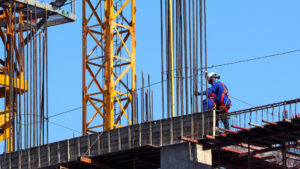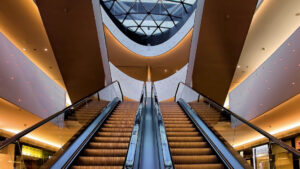Need Any
Consultation?

Railway Over Bridge, Over Rail (ROBS):
Railway Over Bridge, Over Rail (ROBS) projects are critical infrastructures designed to improve transportation efficiency and safety by facilitating uninterrupted flow of road traffic over railway lines. These bridges are essential in reducing congestion, eliminating delays at railway crossings, and enhancing overall connectivity between regions. Built with precision engineering and durable materials, ROBS structures are a testament to advanced construction techniques that prioritize safety, durability, and minimal environmental impact.

Modern Manufacturing & Engineering Solutions Provider
Delivering top-tier manufacturing services with precision and innovation.
- Professional Manufacturing Services
- Dedicated Team Members
- Trusted Manufacturing Partner
Features of Railway Over Bridge, Over Rail (ROBS):
- Durable Construction:
- Made from high-grade steel and concrete, these bridges are designed to withstand heavy traffic loads and environmental stressors, ensuring long-term reliability.
- Optimized Design:
- ROBS structures are meticulously engineered to accommodate the specific requirements of the site, including height clearance for trains and optimal road alignment for vehicles.
- Safety Enhancements:
- Incorporates advanced safety features such as anti-collision barriers, robust guardrails, and proper drainage systems to ensure the safety of both road and rail users.
- Minimal Disruption:
- Designed for quick assembly with pre-fabricated components, reducing construction time and minimizing disruption to existing road and rail traffic.
- Environmental Considerations:
- Engineered to minimize the ecological impact, with options for incorporating green spaces, noise barriers, and other environmental protections.
Benefits of Railway Over Bridge, Over Rail (ROBS):
Eliminates the need for level crossings, significantly reducing traffic congestion and wait times for vehicles at railway intersections.
Removes the risk of accidents between trains and vehicles, providing a safer alternative for both road and rail users.
Reduces fuel consumption and travel time, contributing to economic savings for commuters and transporters alike.
Allows trains to operate without interruptions, improving the efficiency and scheduling of railway services.
Built to last, these bridges require minimal maintenance, leading to cost savings and reliable service for decades.
Applications of Railway Over Bridge, Over Rail (ROBS):
- Urban and Rural Connectivity:
- ROBS structures are vital in both urban and rural settings, improving access and connectivity by bypassing busy railway lines.
- High-Traffic Areas:
- Ideal for regions with frequent train movements and high road traffic, ensuring uninterrupted flow and reducing congestion.
- Industrial and Logistic Corridors:
- Facilitates the smooth transport of goods and materials, crucial for industries and logistic hubs where time efficiency is paramount.
- Residential Zones:
- Enhances safety and convenience for residents by eliminating the need for level crossings in populated areas.
- Railway Expansion Projects:
- Essential for new railway lines or the upgrading of existing ones, supporting infrastructure development with minimal disruption.
Specifications of Railway Over Bridge, Over Rail (ROBS):
- Span Length:
- Customizable based on the specific railway and road requirements, with options ranging from short spans to multi-span structures.
- Load Capacity:
- Engineered to support varying levels of traffic, from light vehicles to heavy trucks, with a focus on durability and stability.
- Material Composition:
- Typically constructed using a combination of reinforced concrete and structural steel for optimal strength and longevity.
- Foundation Type:
- Designed according to site conditions, with deep foundations for stability in challenging terrains or shallow foundations in more stable environments.
- Clearance Height:
- Ensures adequate clearance for trains, complying with railway standards and allowing for future upgrades or electrification.







